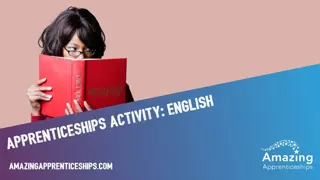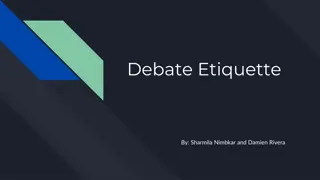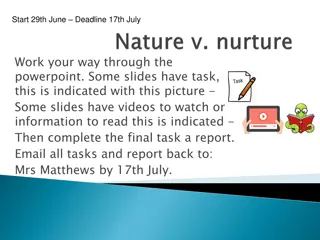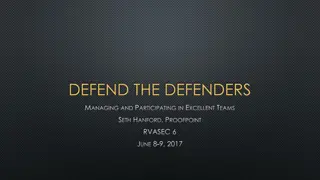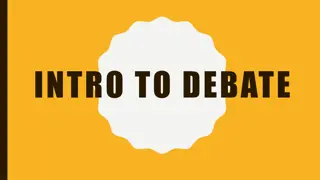Guide to Organizing and Participating in a Debate
Learn how to organize a debate, establish rules, develop resolutions, prepare arguments, and handle speeches effectively. This comprehensive guide covers everything from team organization to speech structure and critical thinking strategies.
Download Presentation

Please find below an Image/Link to download the presentation.
The content on the website is provided AS IS for your information and personal use only. It may not be sold, licensed, or shared on other websites without obtaining consent from the author. Download presentation by click this link. If you encounter any issues during the download, it is possible that the publisher has removed the file from their server.
E N D
Presentation Transcript
1 the rules
Develop the resolution to be debated Organize the teams Establish the rules of the debate, including the timelines Research the topic and prepare logical arguments Gather supporting evidence and examples for position taken Anticipate counter arguments Team members plan order and content of speaking in debate 5
Team 1 Team 2 Not to be To be judge 7
Speech 1 Speech 1 Debate opens with the affirmative team (the team that supports the resolution*) presenting their arguments, followed by a member of the opposing team. * Resolution: the topic of the debate 9
Begin with BIRT (Be it resolved that ) State 3 or 4 supporting points first Then elaborate on each one Plan your strategy ( e.g., go from strongest to weakest) Recap at the end 10
The first speaker in a debate must make sure that the resolution is clearly stated and defined. 11
Speech 2 Speech 2 The second speaker on the opposing team presents further arguments against the resolution, identifies further areas of conflict, and answers questions that may have been raised by the previous affirmative speaker. The second speaker on the affirmative team presents further arguments in support of the resolution, identifies areas of conflict, and answers questions that may have been raised by the opposition speaker. (previous part) 13
Question the validity of your opponents' constructive speech Show their weakest points 14
The rules may include a short recess for teams to prepare their rebuttals. (5 minutes) 15
Speech 3 The opposing team begins with the rebuttal, attempting to defend the opposing arguments and to defeat the supporting arguments without adding any new information. 17
Speech 3 First rebuttal of the affirmative team 18
Point out the inconsistencies, absurdities, and illogical arguments of your opponents. Provide the opportunity for speakers to critique their opponents' arguments Absolutely no new evidence may be presented during this time 19
use humor and / or anecdotes in your speaking. use examples that help illustrate your position. make sure your information is appropriate. stick to your planned, researched arguments. thoroughly research your topic and position, the best start to squashing a rebuttal is a well researched, well designed presentation. speak to the audience, not the teacher. be aware of what your partner(s) plans are. 21
1. Constructive speech 10 min 2. Cross-examination 10 min 3. Rebuttal 5 min Remember:speaking too much or not enough weakens your position 24
Interrupt other speakers while they are speaking. Use personal attacks towards the opposition in your speech 25
Get too personal or emotional. Work alone. Use um or em; within the speech. Use false facts within your speech. TIP: the more you practice and plan your speaking, the less nervous you will be. 26
Use inappropriate language or gestures. Include false evidence or facts in your speech. 27
DO recycle information in your closing speech. Remember: The closing speaker(s) should sum up all relevant arguments and rebuttals without introducing any new information. 28

 undefined
undefined











